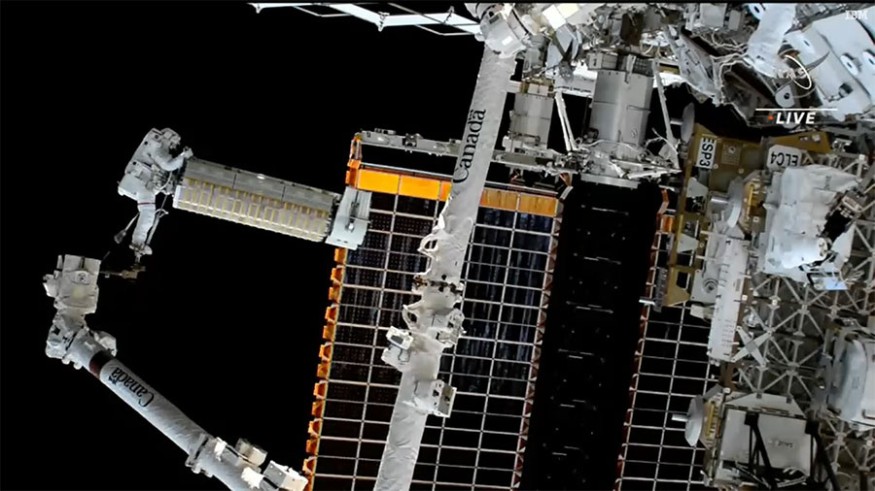NASA recently released a video of a spacewalk at the International Space Station (ISS), wherein Expedition 68 Flight Engineers Josh Cassada and Frank Rubio installed two new solar arrays, BBC News reported. It took them a total of seven hours and five minutes to install this collection of solar panels.
The solar arrays were delivered on November 27 via SpaceX's Dragon cargo ship and will provide the space station with up to a 30% increase in power to generate a total of 120,000 watts of energy.

256th Spacewalk at the ISS
In a blog post by NASA, they wrote that the two astronauts concluded their extravehicular activity at 2:21 pm EST after over seven hours. They completed their major objectives of installing the ISS Roll Out Solar Array (iROSA) and disconnecting a cable to ensure the 1B channel could be reactivated.
Moreover, the duo also completer other tasks, such as releasing several bolts for the upcoming iROSA installation on the 4A channel of the port truss.
The recent extravehicular activity was the 256th spacewalk at the ISS, supporting the space station assembly, upgrades, and maintenance. But it was also the second time the two NAA astronauts conducted a spacewalk.
Astronauts Cassada and Rubio are on their six-month science mission on the space station where they live and working aboard the microgravity laboratory to conduct experiments that will advance scientific knowledge and demonstrate new technologies for future human and robotic exploration missions on other planets and the Moon through the Artemis program.
The next spacewalk for NASA astronauts is scheduled for next Monday, December 19, wherein they will continue to install iROSA on the 4A power channel. It will be the fourth spacewalk dedicated to iROSA, with a total of six planned installations.
Installing the New Solar Arrays
The solar arrays were rolled up like a carpet that weighs about 750 pounds (340 kilograms) and measures 10 feet (3 meters) wide, CNN reported. They were installed in one of the space station's eight power channels at the starboard truss. The solar arrays will be about 63 feet (19 meters) long and 20 feet (6 meters) wide once it is unfurled and bolted into place.
NASA said the goal is to restore 75% of the array's functionality by isolating a section of the impacted array. The original solar arrays installed in the ISS are still functioning, but they have been supplying power to the orbiting laboratory for over 20 years and show some signs of wear after a long time of exposure to space radiation.
They were only designed to last for 15 years and remarkably survived more years than that. But still, erosion due to thruster plumes from the station's thrusters and the crew and cargo vehicles that come and go the ISS is a major contributor to the wear and tear of the original solar arrays. More so, micrometeorite debris poses a threat to them.
The iROSA will have the same 15-year life expectancy, but they will be in constant monitoring to test their true longevity because it may be longer and given the degradation on the original arrays.
RELATED ARTICLE: NASA To Conduct Two Spacewalks Outside ISS in December; When Is The Schedule, How To Watch?
Check out more news and information on Spacewalk in Science Times.












